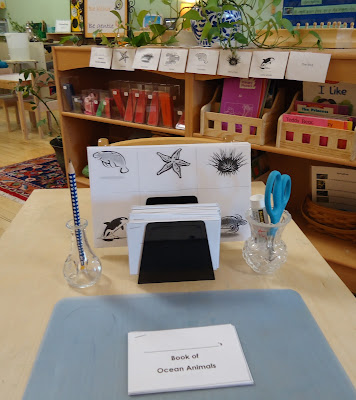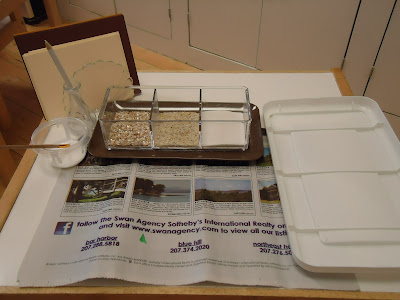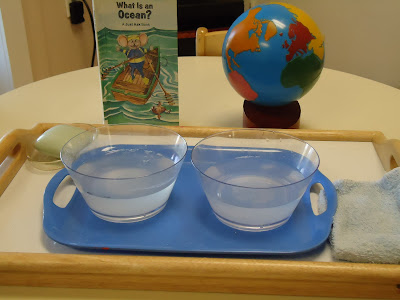Big Stuff has been engaged in a second grade activity about sound. He is a hands-on boy and
loves science. Needless to say, it has been delightful to watch him get excited about his project.
Last week, he came home with the directions: The student is to create an instrument, using only items from around the home, which do the following three things:
1. It must produce sound.
2. It must change pitch.
3. It must change volume.
(Can you imagine the exuberance of Big Stuff's scientist father?)
Here is what Big Stuff came up with:
 |
| Making sound: Striking a large, water filled goblet with a butter knife. |
Sound was produced by the vibrating glass having been struck with the butter knife. He found out that if he tilted the glass, the shape of the water inside went from a circle to an ellipse. This made the sound lower which meant the pitch changed. He compared this to the strings on a melody harp - When the strings were tightened, the sound was higher. When the strings were loosened, the sound was lower.
 |
| Experimenting with sound and strings on the melody harp. |
But what happened if there was no water in the glass?
 |
| Striking the glass with no water. |
The sound was louder! So, how could the pitch be changed without water in the glass? He tried this:
 |
| Rubbing the rim with a wet finger. |
And that produced a sound that was the same as when he struck the water-filled glass. So, how about this?
 |
Rubbing the rim of a smaller glass with a wet finger.
|
The pitch was higher!
Through his various experiments, Big Stuff discovered the elements of sound including, pitch, volume, and resonance (thanks to the last part with rubbing the rim of the smaller glass...).

















































